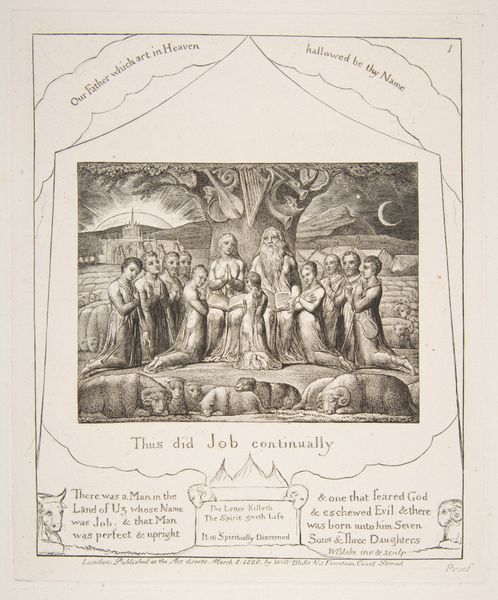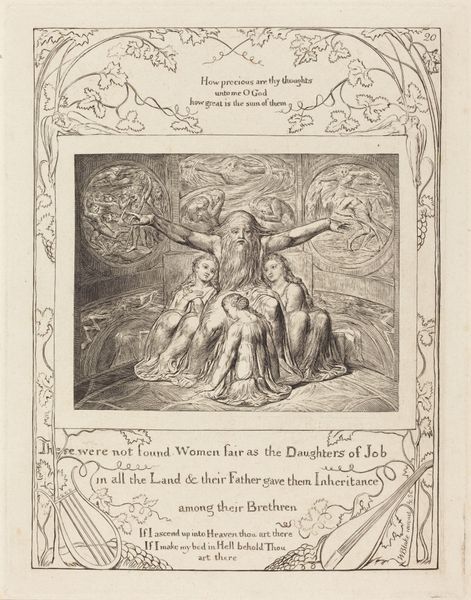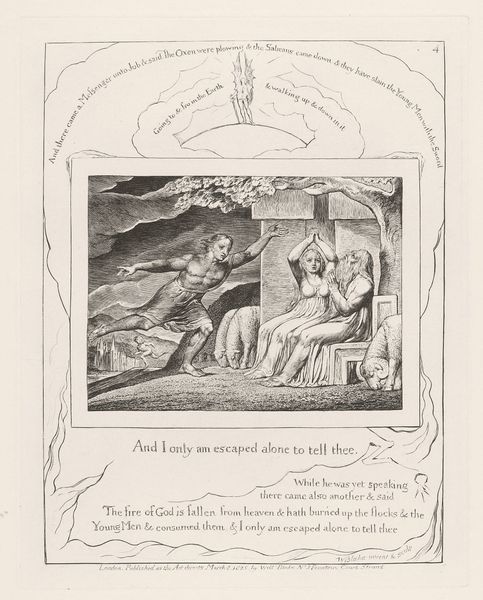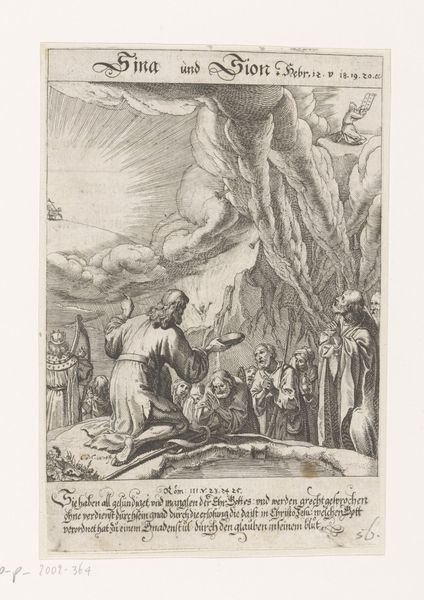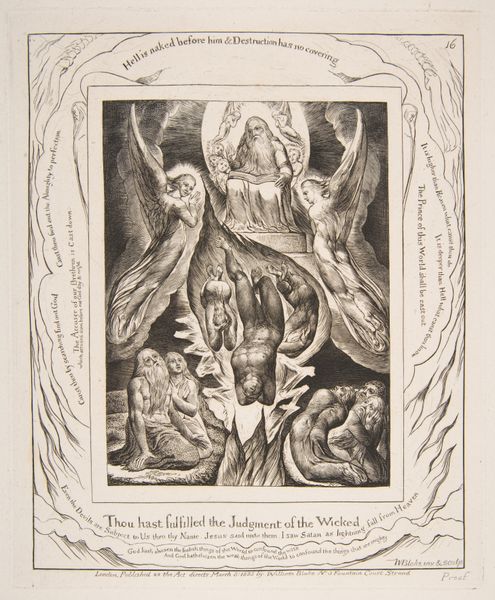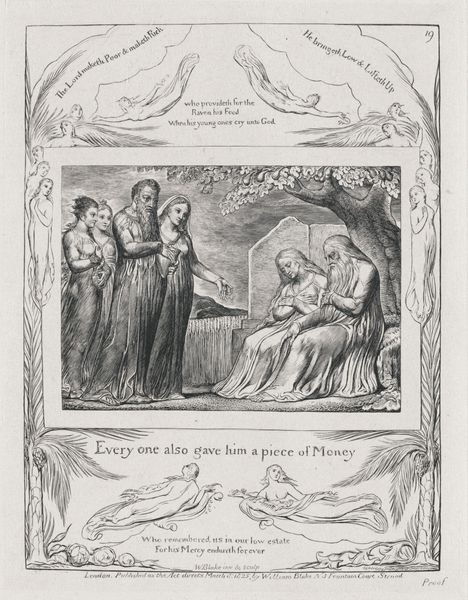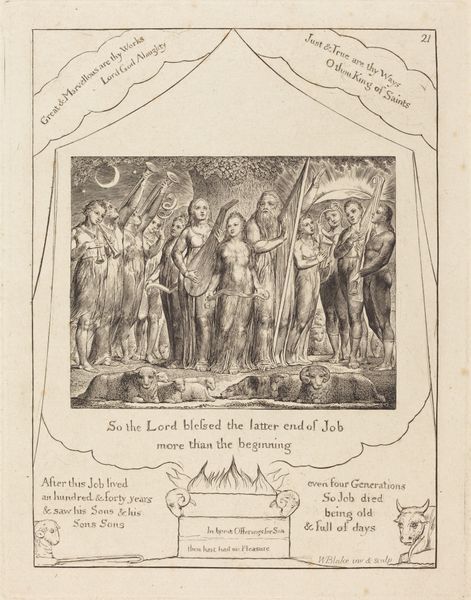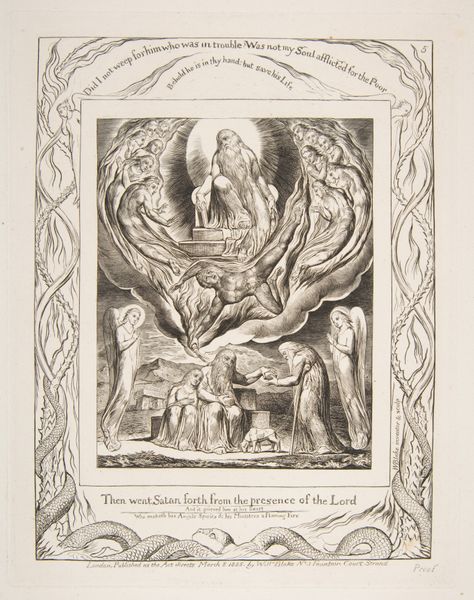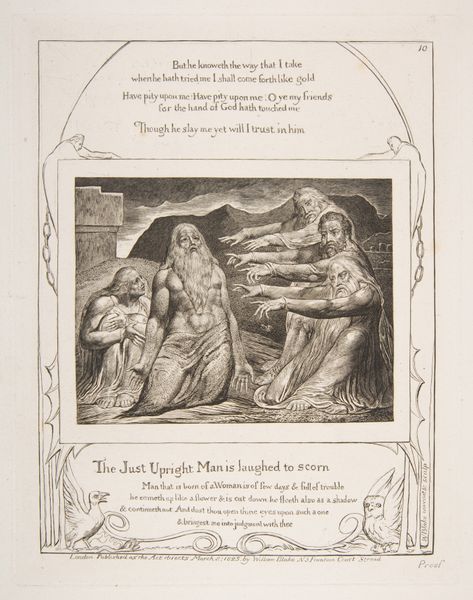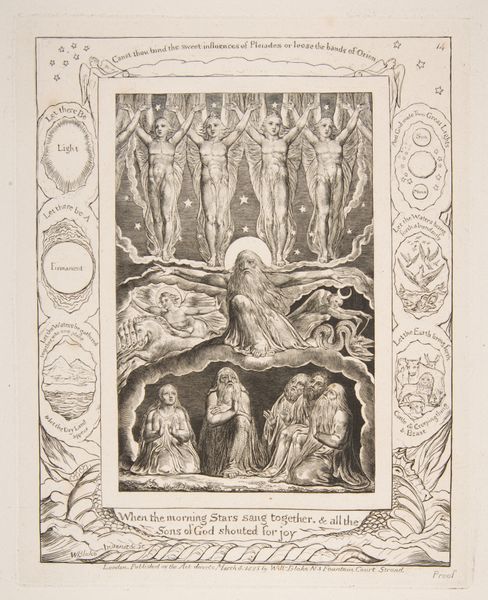
Dimensions: sheet: 36.4 x 28.6 cm (14 5/16 x 11 1/4 in.) plate: 19.8 x 16.5 cm (7 13/16 x 6 1/2 in.)
Copyright: CC0 1.0
Curator: William Blake's engraving, "Thus did Job continually," presents a scene of serene devotion. Editor: The stark contrast and linear precision create such a dreamlike yet solid quality. It’s almost as if the figures are emerging from the paper itself. Curator: Blake often used engraving to express his complex spiritual and political beliefs, rooted in radical Protestantism and a critique of Enlightenment rationalism. This piece grapples with themes of faith and morality through the lens of the Book of Job, and it appears to be from 1828. Editor: The process of engraving itself, the labor involved in carving the image into the metal plate, speaks to the effort and intentionality behind its creation. Curator: The placement of text around the central image is a direct reference to illuminated manuscripts, effectively positioning Job’s narrative within a specific tradition of radical reformist thought. Editor: It's fascinating how the interplay of light and shadow, achieved through meticulous lines, gives form to these spiritual ideas. Curator: Blake sought to expose the oppressive structures of power within institutions. Editor: It’s a reminder that artmaking is itself a kind of work, a physical and intellectual labor that shapes our understanding of the world. Curator: Indeed, and by understanding these contexts, the work becomes more meaningful.
Comments
No comments
Be the first to comment and join the conversation on the ultimate creative platform.


